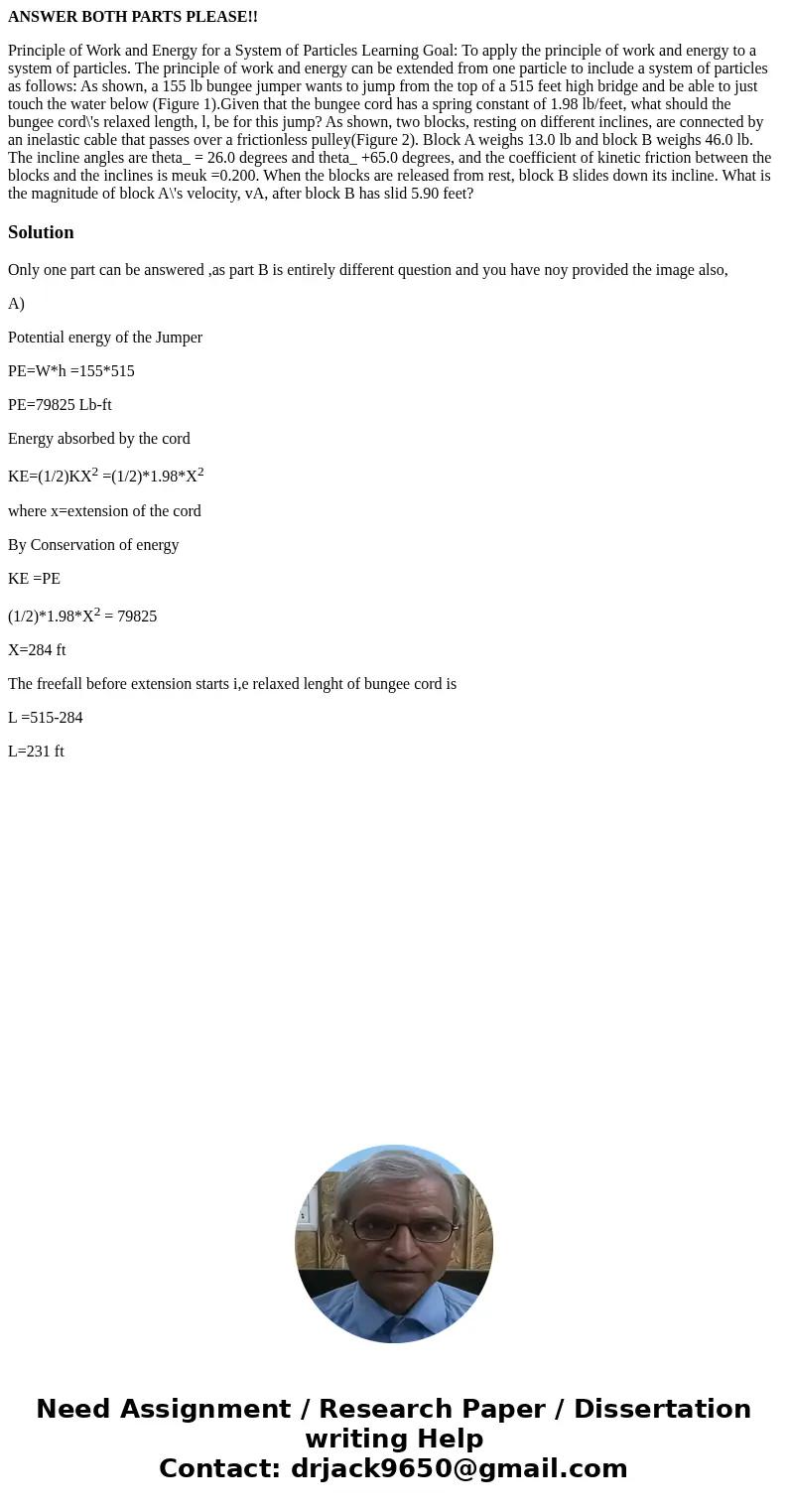ANSWER BOTH PARTS PLEASE Principle of Work and Energy for a
ANSWER BOTH PARTS PLEASE!!
Principle of Work and Energy for a System of Particles Learning Goal: To apply the principle of work and energy to a system of particles. The principle of work and energy can be extended from one particle to include a system of particles as follows: As shown, a 155 lb bungee jumper wants to jump from the top of a 515 feet high bridge and be able to just touch the water below (Figure 1).Given that the bungee cord has a spring constant of 1.98 lb/feet, what should the bungee cord\'s relaxed length, l, be for this jump? As shown, two blocks, resting on different inclines, are connected by an inelastic cable that passes over a frictionless pulley(Figure 2). Block A weighs 13.0 lb and block B weighs 46.0 lb. The incline angles are theta_ = 26.0 degrees and theta_ +65.0 degrees, and the coefficient of kinetic friction between the blocks and the inclines is meuk =0.200. When the blocks are released from rest, block B slides down its incline. What is the magnitude of block A\'s velocity, vA, after block B has slid 5.90 feet?Solution
Only one part can be answered ,as part B is entirely different question and you have noy provided the image also,
A)
Potential energy of the Jumper
PE=W*h =155*515
PE=79825 Lb-ft
Energy absorbed by the cord
KE=(1/2)KX2 =(1/2)*1.98*X2
where x=extension of the cord
By Conservation of energy
KE =PE
(1/2)*1.98*X2 = 79825
X=284 ft
The freefall before extension starts i,e relaxed lenght of bungee cord is
L =515-284
L=231 ft

 Homework Sourse
Homework Sourse